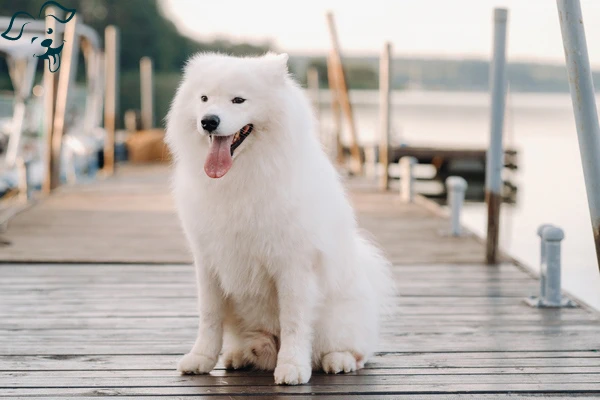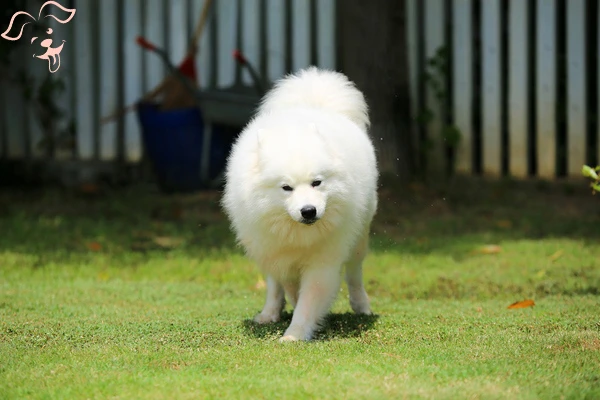CARING WITH FAMILY
|
| The degree of affection a breed typically shows toward family members or familiar individuals can greatly vary. Certain breeds may display a reserved demeanor, bonding closely and exclusively with their owner, while others are gregarious by nature exuberantly greeting everyone they recognize as though they've found a new best friend. This spectrum of canine friendliness emphasizes the importance of matching a dog's social traits with the expectations and lifestyle of their potential family. |
LOVE WITH CHILDREN
Unwise
Good With Children
|
| A breed's patience and tolerance with the antics and behavior of children along with its family-friendly disposition, can differ markedly from one to the next. Regardless of breed, it is crucial to supervise interactions between dogs and young children or any child not accustomed to dogs. Some breeds are known for their gentle demeanor and ability to graciously handle the unpredictable nature of children's play. These dogs often make excellent family pets due to their calm and enduring character. However, understanding a breed's temperament and ensuring suitable introductions and consistent supervision can help foster positive and safe experiences for both children and dogs alike. |
BEHAVIOR WITH DOGS
Unwise
Good With Other Dogs
|
| The inherent friendliness of a breed towards other dogs can vary significantly. While all dogs require supervision when meeting or interacting with other canines, some breeds have a natural predisposition to mingle and coexist peacefully with their fellow pups, whether it's in the home environment or out in public spaces. |
SHEDDING LEVELS & MANAGEMENT
No Shedding
Hair Everywhere
|
| Estimate the shedding levels to expect from your breed of choice. More shedding equates to more brushing, a heightened potential for allergy triggers and a greater need for regular lint rolling and vacuuming. |
COAT GROOMING STANDARDS
|
| Assess the grooming needs of a breed including bathing, brushing, and coat trimming frequency. Evaluate your available time, patience and financial resources for such care, noting that all breeds will need their nails trimmed regularly. |
DROOLING INTENSITY
Less Likely to Drool
Always Have a Towel
|
| Take into account the tendency of a breed to drool excessively. For those who value cleanliness above all, choosing a dog that could leave long strands of drool on your limbs or sizable damp patches on your wardrobe might not be the ideal fit. |
COAT STYLES GUIDE |
| Double |
| COAT SPECTRUM |
| Long |
FRIENDLINESS
Reserved
Everyone Is My Best Friend
|
| Take into consideration how receptive a breed is to new acquaintances. Some dogs maintain a reserved demeanor or exercise caution around strangers irrespective of the environment, while others are consistently eager to welcome a fresh face into their circle. |
LIVELINESS
Only When You Want To Play
Non-Stop
|
| The eagerness for play in certain breeds doesn’t wane with the transition from pup to adult. Expect breeds like these to remain spirited contenders in games of tug-of-war or fetch long after their early years, while others may prefer lounging alongside you on the couch as their preferred pastime. |
VIGILANCE INTENSITY
What's Mine Is Yours
Vigilant
|
| Certain dog breeds are inclined to notify you of unfamiliar presences. They tend to respond vigilantly to potential hazards be it your local postman or a squirrel scampering past the window. These same breeds often grow accustomed to new people entering your home, especially if they're welcomed by the household. |
ADAPTATION CAPACITY
Lives For Routine
Highly Adaptable
|
| A breed's adaptability to change is an important trait. This encompasses their ability to adjust to new living environments, tolerate noise, adapt to shifts in the weather and cope with alterations in their daily routine, along with other unforeseen fluctuations in day-to-day existence. |
OBEDIENCE LEVEL
Self-Willed
Eager to Please
|
| The ease with which you can teach your canine companion along with their eagerness to pick up new skills greatly varies from one breed to another. There are certain breeds that seem to take immense pleasure in pleasing their human friends tirelessly striving to impress. Conversely, some pooches march to the beat of their own drum choosing to indulge in their whims whenever the fancy strikes, regardless of the setting. |
STAMINA LEVEL
|
| Different dog breeds require varying levels of physical activity and mental engagement. Those with high-energy levels are always on the move, enthusiastically awaiting new escapades. Their days are filled with a bevy of activities including running, leaping and an abundance of playful antics. Meanwhile, breeds on the more relaxed end of the spectrum prefer a sedentary lifestyle content to lounge and nap the day away. |
VOCALIZATION
|
| Medium |
LEARNING CURIOSITY LEVEL
Happy to Lounge
Needs a Job or Activity
|
| The necessity for mental engagement to ensure a breed's well-being and happiness varies. Dogs bred for specific roles often thrive on tasks demanding cognitive skills, such as problem-solving and concentration. If they aren't provided with suitable mental stimulation, they may take the initiative to start their own kind of mischief-making activities, which are often less than agreeable to their owners. |
| COLORS |
|
Description
|
Registration Code
|
|
White
|
199
|
|
Biscuit
|
006
|
|
Cream
|
076
|
|
White & Biscuit
|
269
|
|
| PATTERNS | . |






























FRIENDLINESS
LIVELINESS
VIGILANCE INTENSITY
ADAPTATION CAPACITY